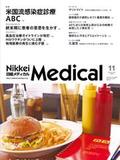(関連目次)→医療訴訟の現状 目次 事例集
(投稿:by 僻地の産科医)
 日経メディカル2008年11月号からo(^-^)o!!
日経メディカル2008年11月号からo(^-^)o!!
読むだけでなんだかイマイチな事例です(´・ω・`) 。。。
この事件について、
なにか詳細の記事を持っていらっしゃる方がいたら
ご教示くださいませ。
健診の採血で神経損傷 安易な過失判決に疑問
皆川・水澤法律事務所
水澤 亜紀子
健診の受診者が、注射針の誤刺入で神経を損傷されたとして、健診機関を相手取って裁判を起こしました。健診機関は患者の症状と注射との因果関係を否定しましたが、裁判所はその主張を認めず、損害賠償の支払いを命じました。
(Nikkei Medical 2008.11 p167-169)
事件の概要
臨床検査技師Aは、ある団体の健康診断で職員Xに採血を実施した。Aは、Xの上腕部を駆血帯で縛って肘枕に乗せ、最も分かりやすい血管を手で触れて確認した。その後、消毒して肘を伸ばした扶態で、約15度の角度で右肘正中安静脈に注射針(22ゲージ)を刺入した,
当初、6mLを採血する予定だったが、Xが痛みを訴えたため、Aは注射針を抜いた。結果、約3mLしか採血できなかった。採血の際にXは「痛い、やめてほしい」と訴え、その声を聞いてXの同僚がそばに寄って来た。採血後、Xの右前腕が腫れているのが確認された。
翌日、Aが所属する医療機関Yの職員は、Xの勤務先に電話して様子を確認した。その後、Xは右前腕尺側領域にしびれと痛みを訴えて整形外科クリニックを受診。反射性交感神経性ジストロフィー(RSD)などと診断された。
Xは、Aが実施した採血により右腕、右手なとに障害が生じたと主張し、Aの使用者である医療機関Yに対して不法行為に基づく損害賠償金8300万円余りの支払いを求めて提訴した。
判 決
一審ではXの請求は棄却されたが、これを不服として控訴した二審では逆にAの過失が認められ、医療機関Yに3460万円余りの損害賠償金の支払いが命じられた(仙台高裁秋田支部2006年5月31日判決)。
裁判所は次のように判断し、Aの過失を認定した。
① 採血時にXが痛みを訴えたため、Aは必要量の半分しか採血できていなかったにもかかわらず採血を中止した。この事実は、採血の目的などに照らしても、極めて異常な事態が生じたことを強く推認させる。
② Aは、駆血帯の縛りすぎによりXが痛みを訴えたので採血を中止したと証言し、Aの上司も「採血が中止されたときの状況は不明」と陳述する。しかし、採血は定期健康診断の一環であり、必要な血液の採取を業務内容とするAやその上司の立場からすると、格別の理由もないのにXからの採血のみが適量に達せず、これに基づく検査を十分行えないという事態は極力避けようとするはずである,少なくとも「駆血帯の縛りすぎ」というような、いねば容易に改善可能な一過性の事情の存在だけで、その改善も、Xへの再度の採血の働きかけや説得も全くせずにAが採血を中止し、上司も何ら指示を与えたり、相談したりすることがなかったというのは誠に不可解である。
このため、Aおよび上司の証言や陳述は到底信用できない。むしろこのような重要な事故についてAや上司らが事実を隠そうとしている裏には、同人らに非常に都合が悪い事情が存在するのではないかとの疑いも当然生じる。
③ 医療機関Yの担当者が本件採血の翌日にXの様子を確認するため、わざわざXの勤務先に電話をしている。Aが証言している「駆血帯の縛りすぎ」が中止理由なら、電話などする必要はないはずである。
④ 採血の場にいたXの同僚も、Xの「痛い、やめてほしい」という声を聞いてそばに行ったと述べている。
裁判所はこれらを総合的に勘案し、Xが採血時に訴えた痛みは、直ちに採血の中止を余儀なくさせるような極めて異常なものであったと推認できるとした。そして、採血の状況や一般的な技法、注意事項などをかんがみれば、Aには、採血した際、格別やむを得ない特殊事情もないのに、注射針を静脈から逸脱させてXの神経損傷を招いた点に過失のあることが明らかであると認めた。
解 説
採血や注射は、直接は目に見えない静脈に、いわば勘と感覚を頼りに針を刺す手技です。近くには神経が走行していることもまれではありません。このため、神経損傷は採血検査の避けられない合併症の一つであり、どれほど注意していても何人かに1人は発生するものです。
こうした採血において過失や合併症についての責任が結果責任に近い形で認められれば、誰も注射や採血など進んで行わないでしょう。
医療従事者は、過失を認定したこの判決を読み、果たして納得できるでしょうか。
特に健診での採血や注射のようなありふれた手技の場合、通常、特別な記録などは作成されず、多くの人に実施する処置なので施行者の記憶も不確かです。このため、裁判上、「具体的にどのような方法で採血や注射がなされたか」という事実関係を詳細に証明することは、患者側にとっても医療機関側にとっても困難なことが多いのが現状です。
しかし、そのような状況でも裁判所としては事実を認定し、それが「適切な採血だったのか否か」を判断しなければなりません。この場合、裁判所としては当該採血に関するささいとも思われる事情(間接証拠)の積み重ねにより、事実認定や評価をします。
このように間接証拠の積み重ねで判断される際には、「いかにも非があるように思われる事情」があれば、論理を超えてそれだけで「過失(非)がある」との印象を持たれる危険性があります。本判決でも、注射行為が具体的にどのように実施され、そのどこが悪かったのかの詳細な事実認定と評価はされず、【判決】で挙げた①~④のごく辺縁的な事情をもって、「過失のあることが明らかである」と判断されています。
予断なく分析的に考えれば、①ないし④からは|採血で神経損傷を来してしまった」事実しか推認できないはずです。適切な採血で神経を損傷することもあるのですから、本来はさらに、「注射行為に過失があったのか」という点について十分な審理が必要になると思われます。採血の途中で患者が動いたため針が血管外に出てしまったのかもしれないし、予想外に静脈が虚脱してしまったために逆血がなくなり、針先が血管外に出てしまったのかもしれません。
採血と神経損傷の関連性が認められた上で、「それは致し方ない」「それでも採血行為には過失がない」とされるべき場合もあるはずであり、このことについて本訴でどれだけ審理されたのか、疑問を感じざるを得ません。②のような医療者側に対する「悪い印象」や、③にある「きな臭さ」などをもって単純に「過失のあることが明らか」とされたように思えてなりません。
3分でわかる 判決のポイント
採血・注射手技に関するほかの裁判例には、どのようなものがありますか?
東京地裁2007年4月9日判決では、注射手技と神経損傷の関連性を認めながら、注射手技の過失を否定しています。注射の際に痛みの訴えが特になかったこと、意図的に針を動かしたりせず採血が完了したこと、帰宅するまで特に痛みの訴えも出血もなかったことなとから、注射手技は適切で神経損傷は避けられなかったと判断しました。
他方、松山地裁02年9月5日判決(二審:高松高裁03年3月14日判決)では、本件と同様、「実際に採血できなかった」ことなどがら、採血手技の過失を認定しています。ちなみに、大阪地裁1998年12月2日判決では、手背からの点滴の入れ替えに際して強い痛みがあったのに、同じ場所に重ねて針を刺したことをもって過失としており、1回目の針刺し(おそらく1回目にも神経損傷があったと推測されます)だけで単純に過失とはしていません。
採血・注射の過失を判断する上で、裁判所はどんな点を重視するのでしょうか?
本判決や前述の松山地裁判決では、予定通り採血できなかったこと、注射途中で痛みの訴えがあったことを、過失評価上、重視しているようです。
しかし、注意を払って採血しても、同様の状況になることはあるでしょう。このような事情があったときには特に、注射時に意識した注意点、注射の状況(血管の見えやすさ、刺入部位・方向、痛みの有無、逆血の有無など)を記録しておくことを勧めます。
本判決の論理からすれば、「通常、注射の際には特に記録を残さないのに、本件で記録を残したことが不自然である」とされかねませんが、最悪なのは証拠(記録)がな<、事奥関係が患者側・医療機関側双方とも不明確な中で、裁判所から印象に基づいたかのような判断をされることです。できるだけ証拠を残して事実関係の争いを少なくし、確定した事実関係に基づいた評価の問題に帰着させることが重要です。
なお、本判決の論理からすると、事後的に患者の状態確認の連絡をすることも不利な事情にされかねませんが、本来は注射で神経損傷を来しただけでは過失とされないので、この点について神経質になる必要はないでしょう。
RSD関連の裁判は多いのでしょうか?
増えている印象はあります。特に整形外科領域と、本件のような採血・注射に関するものが多いようです。ちなみに本件では、「採血直後からRSDを発症していた」とされており、この点も医学的観点から疑問が生じます。
RSDの診断は容易ではないので、診断書があっても裁判では認められないこともあります(名古屋地裁07年4月26日判決など)。原告側からRSDの診断書が出されても、直ちに不利な状況に陥るわけではありません。
みずさわあきこ氏
医師・弁護士。 1989年東北大医学部卒、総合病院内科勤務を経て、99年弁護士登録。 2004年に仙台市で皆川・水澤法律事務所を開設、医療者側に立った弁護活動を行っている。
検索確認したところ,判例時報1958号80頁,判タ1260号309頁に詳細(おそらく判決文全文)があるようです。
投稿情報: 峰村健司 | 2009年1 月 4日 (日) 21:20
Vielen Dankeです(>▽<)!!!!
お取り寄せしてみますね!!!!
投稿情報: 僻地の産科医 | 2009年1 月 4日 (日) 23:42
静脈穿刺の神経損傷は藤田保健衛生大の山田氏がいい仕事されてます。解剖学的に皮神経は高頻度で皮静脈の前を通っていて、決して採血の技術的側面の問題ではありません。これもガリレオ裁判の類かと。
Kouji Yamada: Clin. Anat. 21:307-313, 2008.
Cubital fossa venipuncture sites based on anatomical variations and relationships of cutaneous veins and nerves.
(Abstract)
Venipuncture is a routine procedure performed at medical institutions for blood collection and blood donation, as well as for health screening and testing. Venipuncture is invasive and usually mildly painful, but it occasionally causes internal bleeding and chronic persistent pain, which is referred to as complex regional pain syndrome. The most common site of venipuncture is the upper arm. The present study macroscopically and anatomically ascertained positional relationships between cutaneous nerves and veins in the cubital (aka antecubital) fossa in many cadaveric dissections to determine the risk of peripheral nerve injury during venipuncture. We identified the most suitable venipuncture site in the upper arm. The medial cutaneous nerve of the forearm (MCNF) passed above the median cubital vein (MCBV) in 27 of 128 cases (21.1%), and was located inferior to the MCBV in 37 of 128 cases (28.9%). The MCBV also passed above the lateral cutaneous nerve forearm (LCNF) in 8 of 128 cases (6.2%). The LCNF was located deeper than the MCBV in 56 of 128 cases (43.8%). The distribution of cutaneous veins and nerves widely varies, and while no single area suitable for all individuals was identified, puncture of the MCBV near the cephalic vein is the least likely to cause nerve damage.
投稿情報: jrc | 2009年1 月 5日 (月) 09:45